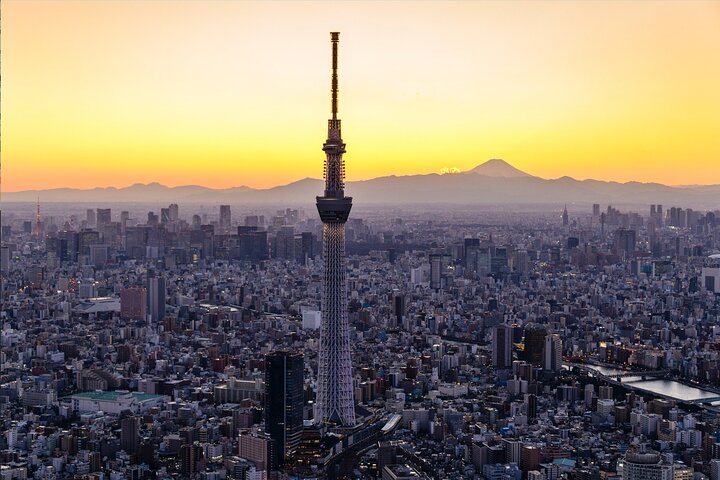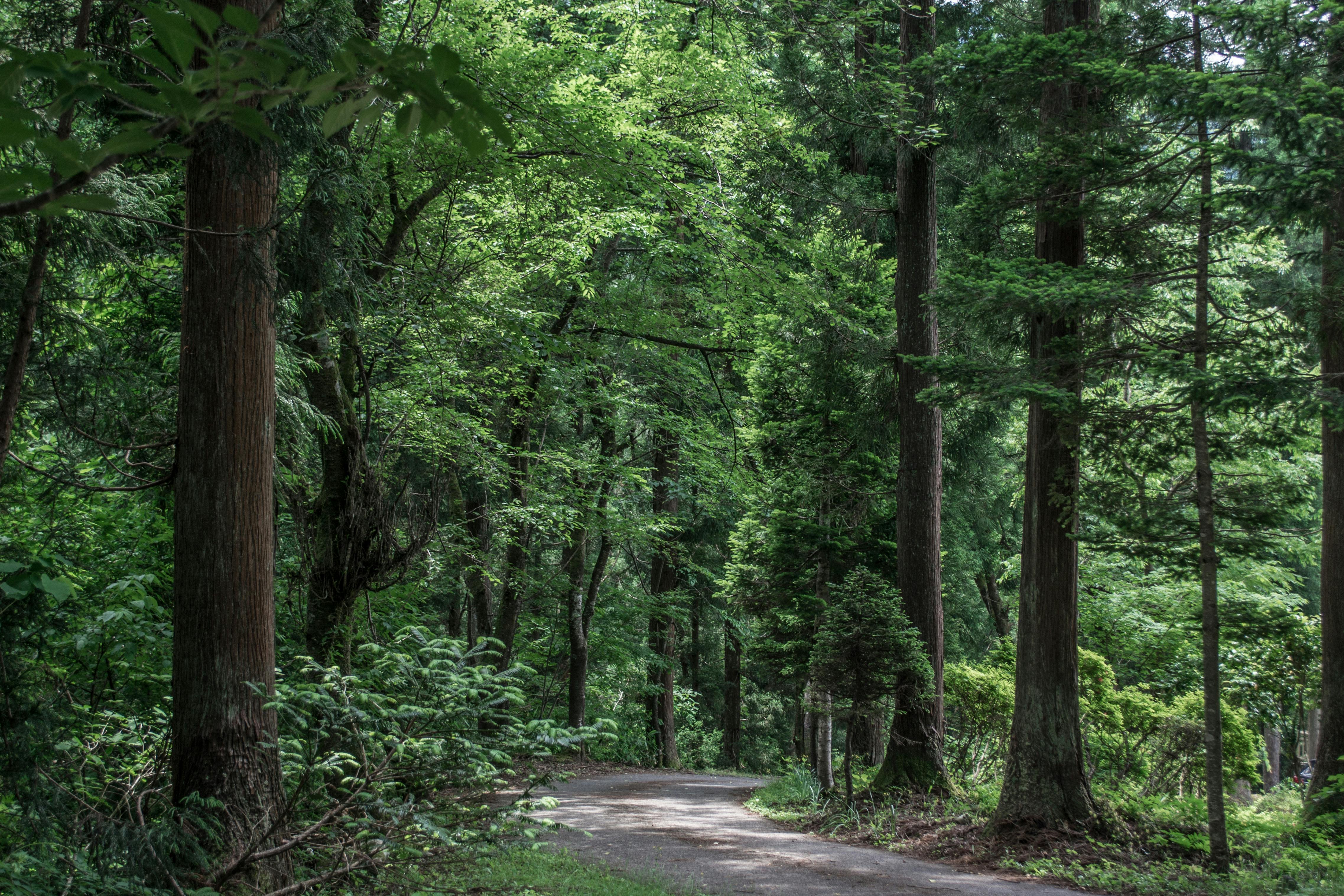Slow & Scenic Niigata: A Relaxing 10-Day Japan Sea Itinerary with Sado Island and Alpine Hikes
Niigata Prefecture sits on the Sea of Japan coast, famous for Koshihikari rice, crisp sake, and a coastline that glows at sunset. Its capital, Niigata City, blossomed as a port in the Edo period, and today it blends riverside promenades, a graceful arched bridge, and some of Japan’s best seafood markets.
Just offshore, Sado Island tells stories of gold and seafaring—Aikawa’s mines, Shukunegi’s shipwright lanes, and Ogi’s tub boats—against wild headlands and quiet beaches. Inland, Myoko Kogen opens to cedar forests, mirror ponds, and the thundering Naena Waterfall in a national park—perfect for gentle to moderate hikes.
This plan leans fully into “Odprężający” vibes and a very low budget: free walks, scenic overlooks, inexpensive local meals, and restful pacing. You’ll move by train, ferry, and short buses, keeping costs predictable. Expect warm hospitality, honest flavors, and plenty of time to linger in cafes.
Niigata City
Niigata City unfurls along the Shinano River, where the photogenic Bandai Bridge frames sunset. The compact center makes it easy to wander between Hakusan Shrine, the old geisha streets of Furumachi, and the Pier Bandai market for ultra-fresh sushi—at friendly prices.
- Top highlights: Bandai Bridge at golden hour, Ponshukan sake tasting wall (inside Niigata Station), Pier Bandai seafood market, Northern Culture Museum’s garden.
- Budget bites: hegi soba (soba with funori seaweed), Tsubame-Sanjo style ramen with a slick of backfat, giant “bakudan” onigiri at Ponshukan.
- Local tips: The Niigata Nippo Media Ship observatory floor (free) offers great city-and-river views.
Stay near Niigata Station or Bandai. Search deals on VRBO Niigata or budget hotels on Hotels.com Niigata.
Getting in: From Tokyo, take the Joetsu Shinkansen to Niigata (~2h; from ~11,500 JPY one-way). Compare trains on Trip.com Trains. For flights into Tokyo (HND/NRT) or directly to Niigata (KIJ), check Trip.com Flights or Kiwi.com.
Optional Tokyo add-ons (if transiting via Tokyo):
-
Asakusa Senso-ji Temple and Old Tokyo Walking Tour

Asakusa Senso-ji Temple and Old Tokyo Walking Tour on Viator -
Tokyo Skytree Admission Ticket with Tembo Deck and Galleria

Tokyo Skytree Admission Ticket with Tembo Deck and Galleria on Viator
Sado Island
Sado is where history meets raw coastline: Aikawa’s Sado Gold Mine and steampunk-like Kitazawa flotation plant, Shukunegi’s wooden townscape, and Ogi’s famous tub boats. The north’s Onogame and Futatsugame bring breezy headlands and sea views.
- Top highlights: Lake Kamo, Sado Gold Mine, Shukunegi village, Yajima–Kyojima tarai-bune (tub boat) rides, Senkaku-wan Bay boardwalk.
- Budget tips: Opt for the slower car ferry (about 2.5 h) instead of the jetfoil; buses connect Ryotsu, Aikawa, and Ogi.
Where to stay: Base in Ryotsu (easy buses) or Aikawa (near heritage sites). See VRBO Sado and Hotels.com Sado.
Getting there: From Niigata to Ryotsu Port by ferry. Jetfoil ~65–75 min (~7,000–8,000 JPY); car ferry ~2h30 (~3,000 JPY foot passenger). Bus from Niigata Station to the ferry terminal is ~15 min.
Myoko Kogen
In Myoko-Togakushi Renzan National Park, trails unfurl to ponds and waterfalls. Naena Waterfall roars through a basalt gorge, while placid Imori Pond mirrors Mount Myoko—a gentle loop for a calm morning.
- Top highlights: Naena Waterfall hike, Imori Pond loop, onsen soaks in Akakura or Tsubame Onsen, cedar forests and easy ridge ambles.
- Budget tips: Trails are free; day-use onsen typically cost 600–900 JPY. Pack picnic lunches from a local supermarket.
Where to stay: Akakura Onsen area for walkable food and buses. Compare VRBO Myoko and Hotels.com Myoko.
Getting there: From Niigata, take the Joetsu Shinkansen to Joetsu-Myoko (~45–55 min), then local train/bus to Akakura (~40–60 min). Plan via Trip.com Trains.
Day 1: Arrive Niigata City
Afternoon: Arrive by Shinkansen from Tokyo (~2h). Drop bags near Niigata Station. Take a gentle river walk to the elegant, 1929 stone-arch Bandai Bridge and the riverside promenade.
Evening: Dinner on a budget at Pier Bandai’s casual counters—think a heaping kaisen-don (seafood bowl) or affordable kaiten-sushi. For dessert, try “sasadango,” a local mugwort rice sweet.
Day 2: Old Town, Shrine, and Sake
Morning: Coffee and a pastry near Bandai (look for local bakeries and small roasters). Visit Hakusan Shrine—lantern-lined paths and a serene garden perfect for a quiet start.
Afternoon: Head to the Furumachi district for historic lanes, then to the Northern Culture Museum (former Ito family estate; lovely gardens). Bring a simple bento to enjoy on a bench outside.
Evening: Back at Niigata Station, sample the Ponshukan sake tasting wall—buy a few tokens and explore regional brews. Grab a budget bowl of Tsubame-Sanjo style ramen for dinner.
Day 3: Yahiko Shrine and Mt. Yahiko (Day Trip)
Morning: JR train to Yahiko (about 45–60 min). Pay respects at the atmospheric Yahiko Shrine, surrounded by cedar and maple.
Afternoon: Take the ropeway up Mt. Yahiko for coastal views, then descend on an easy forest trail if you prefer. Lunch can be a simple soba set or katsudon near the shrine.
Evening: Return to Niigata. Stroll the river again at dusk; pick up giant “bakudan onigiri” at Ponshukan for a cheap, filling bite.
Day 4: Markets, Aquarium, and Views
Morning: Browse Pier Bandai after breakfast—fruit stands, fishmongers, and local pickles are a window into Niigata’s pantry. Coffee at a nearby stand and people-watching.
Afternoon: Visit Marinepia Nihonkai (Niigata City Aquarium) for an easygoing few hours. Alternatively, linger in a cafe and journal.
Evening: Catch sunset from the free observatory at the Niigata Nippo Media Ship, then seek a wallet-friendly noodle shop back near the station.
Day 5: To Sado Island — Lake Kamo and Ryotsu
Morning: Bus (~15 min) from Niigata Station to the ferry terminal. Take the car ferry to Ryotsu (~2h30; cheapest option). Enjoy the sea air on deck.
Afternoon: Check in near Ryotsu. Walk the lakeside path at Lake Kamo—flat and relaxing, with birds and bobbing boats.
Evening: Dinner at a local sushi spot—Sado’s waters mean excellent, reasonably priced nigiri. Early night.
Day 6: Aikawa Heritage — Gold Mine and Ruins
Morning: Bus to Aikawa. Tour the Sado Gold Mine exhibits and tunnels to learn how the island powered the shogunate’s coffers. It’s cool underground—bring a light layer.
Afternoon: Walk to the photogenic Kitazawa flotation plant ruins—ferns and concrete tiers make a striking scene. Simple curry or noodle lunch in town.
Evening: Bus back. Grab a convenience-store picnic by Lake Kamo for a very low-cost dinner with a view.
Day 7: Ogi and Shukunegi — Tub Boats and Wooden Lanes
Morning: Bus to Ogi and take a tarai-bune (tub boat) ride at Yajima–Kyojima. The short loop is peaceful and fun to photograph.
Afternoon: Wander Shukunegi’s tight lanes of dark wooden houses where shipbuilders once lived. Pick up gelato or iced coffee at a small cafe and rest in the shade.
Evening: If buses align, detour to Senkaku-wan Bay for coastal views before returning to Ryotsu. Dinner: a seafood bowl or tempura set.
Day 8: To Myoko Kogen — Imori Pond Stroll
Morning: Ferry back to Niigata (early sailing), then Joetsu Shinkansen to Joetsu-Myoko (~45–55 min) and bus/taxi to Akakura. Plan tickets via Trip.com Trains.
Afternoon: Check in and stretch your legs on the flat Imori Pond loop (about 1 km) for classic Mount Myoko reflections.
Evening: Soak at a public onsen (day-use is budget-friendly). Simple dinner like katsu curry or soba in the village.
Day 9: Naena Waterfall Hike and Onsen
Morning: Bus/taxi to the Naena Waterfall trailhead; the forest path is well-maintained (roughly 20–30 minutes each way). The basalt gorge and spray are invigorating.
Afternoon: Picnic lunch, then a second short walk in cedar woods or a cafe break back in Akakura.
Evening: Another soak—try a milky-white hot spring at Tsubame Onsen if you can get a ride up. Quiet evening stroll.
Day 10: Departure Day (Niigata or Tokyo Route)
Morning: If departing from Niigata: head back by train (~1h45–2h from Myoko; change at Joetsu-Myoko) and shop Pier Bandai for souvenirs (local rice crackers, miso). If transiting via Tokyo: early Shinkansen (~2h from Niigata) and choose one of the optional Tokyo activities below if time allows.
Afternoon: Depart Japan. For flight options, check Trip.com Flights or Kiwi.com.
Evening: In-flight or trains home.
Optional Tokyo time on Day 10 (pick one if your schedule fits)
-
Asakusa Senso-ji Temple and Old Tokyo Walking Tour — classic temples and retro alleys, great for first-time visitors.

Asakusa Senso-ji Temple and Old Tokyo Walking Tour on Viator -
Tokyo Skytree Admission Ticket with Tembo Deck and Galleria — fast city views between trains.

Tokyo Skytree Admission Ticket with Tembo Deck and Galleria on Viator
Eating and cafe notes (budget-forward)
- Niigata Station Ponshukan: taste sake with tokens and grab a giant “bakudan onigiri” stuffed with local fillings—cheap, filling, and delicious.
- Pier Bandai: affordable kaisen-don, grilled fish plates, and soft-serve made with local milk. Morning is best for variety.
- Hegi soba shops: order a basic set (soba + tempura or small sides) for value; soba is arranged in neat “hegi” folds—very Niigata.
- Cafes: You’ll find cozy roasters around Bandai/Furumachi and simple seaside stands on Sado—perfect for the kawiarnie vibe between walks.
Ten slow days along the Japan Sea leave you rested and full of quiet moments—bridges and shrines in Niigata, heritage lanes and calm coves on Sado, waterfalls and warm baths in Myoko. With trains, ferries, and simple meals, the route stays gentle on your wallet while rich in atmosphere.

